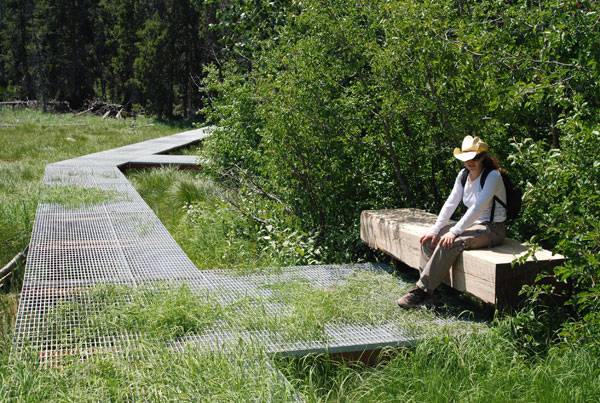5 Simple Techniques For Landscape Design
Table of ContentsLittle Known Questions About Landscape Design.The Single Strategy To Use For Landscape DesignGet This Report about Landscape DesignThe 5-Second Trick For Landscape Design
A yard can generally be separated right into 3 locations: public (the front lawn), personal (the back yard), and service (commonly the side yard). The location of task locations depends primarily on the kind of area, the size of room needed, the kind of activity, and the wanted closeness to various other activities and frameworks.
The outdoors wall of your house frequently works as the very first wall surface or beginning factor of an outside area. Incompatible uses must be divided, and associated activities, such as food preparation and dining, must be put with each other to make the lawn much more efficient and pleasurable. When using hardscape to create rooms, utilize building and construction product similar to that used in the home for connection from your home right into the yard.
Linked spaces. Credit Score: Gail Hansen, UF/IFAS Making use of comparable hardscape functions and duplicating plants draws the eye around the garden.
This gives a sense of secret that advertises exploration and discovery of the landscape. From a style viewpoint, plant materials have 3 significant functions in the landscape: visual, structural and utilitarian. Cosmetically, plants create an aesthetically pleasurable setting and structurally plants organize and specify areas. Plants are utilitarian because they can transform the setting for the convenience of the user by modifying light, temperature and humidity.
The Best Guide To Landscape Design
For mental convenience plants are utilized as physical or suggested obstacles for personal privacy and security. Physical barriers obstruct both the sight and accessibility to an area and include fences, walls and plant hedges. Landscape Design. Implied barriers, commonly low growing plants, obstruct access however not the view (Number 9). Various other features of plants include cleaning up the air, stopping erosion and dirt loss, preserving wetness in the soil, and returning raw material to the soil.
Physical and implied barriers. Credit Scores: Gail Hansen, UF/IFAS For these factors, the kinds of plants to be utilized (such as trees, bushes, or groundcovers) must be chosen in the early stages of preparation. Plant kinds are picked for their useful capabilities so that their future purpose and called for space can be considered at the same time.
The above airplane, the upright plane and the ground airplane must all be taken into consideration to develop room. When the form of a plant bed has been developed, the plants ought to be massed (organized) and split to attain aesthetic unity and the desired quantity of enclosure. The dimension of a plant mass will certainly depend upon the complete size of the lawn, the dimension of the individual plants in the mass, and the focus or impact wanted from the plant material.
Each plant mass is in front of, behind, or alongside, another mass. Number 11. Straight plant layers. Credit History: Gail Hansen, UF/IFAS Number 12. Vertical plant layers. Credit: Gail Hansen, UF/IFAS Repeating plants within a mass and duplicating masses with similar plants connects the yard together. The private plant characteristics need to be taken into consideration to effectively layer and mass plants.
Landscape Design for Beginners
All plant make-ups start with the primary framework plants, the large, mostly evergreen history plants-such as the trees and big bushes. These plants separate or enframe rooms, regulate the size of the area, and offer the starting point for choosing the view it appropriate attributes of the 2nd layer, midground plants, for massing and infill.
Vital factors in the yard ought to be highlighted by the use unique plants, distinctive frameworks, or yard accessories. Noting limits or entrances to spaces can be performed with gates, arbors, and steps, or through using distinct and vivid plants. The type and/or design theme of the yard will certainly often assist determine the important points and just how they ought to be highlighted.
Various other crucial places in the backyard are focal points, which is used to aesthetically organize a landscaped location. Different viewpoints or perspectives can expose different structures in the landscape that might call for a variety of focal points.
Top Guidelines Of Landscape Design
Plant forms. Credit: Gail Hansen, UF/IFAS After form, texture is the following leading function of a plant; rugged, medium and fine structures can be utilized for contrast and emphasis in the landscape.


The pleasurable scent of plants, see this here the audio of wind in the trees, the noise and appearance of water, and the colors and textures of sculptures, pots and yard furniture all include in the experience of the garden. One information that is commonly neglected is the result of light on the visual appeals of the plants.
The whole yard changes in feature and look throughout the day, and the course of a year, as the light and temperature level adjustment from morning to evening and season to season. Plant option should take into consideration a plant's growth price, its fully grown dimension and form, and the upkeep it will need.
It is very important to recognize the eventual mature dimension of plants so they can be placed in the right place and spaced properly when they are set up. Offering plants room to expand is a challenge since the you could try this out common mature dimension is usually based upon optimal expanding problems and the environmental problems of a site might cause a plant to enlarge or stay smaller sized.